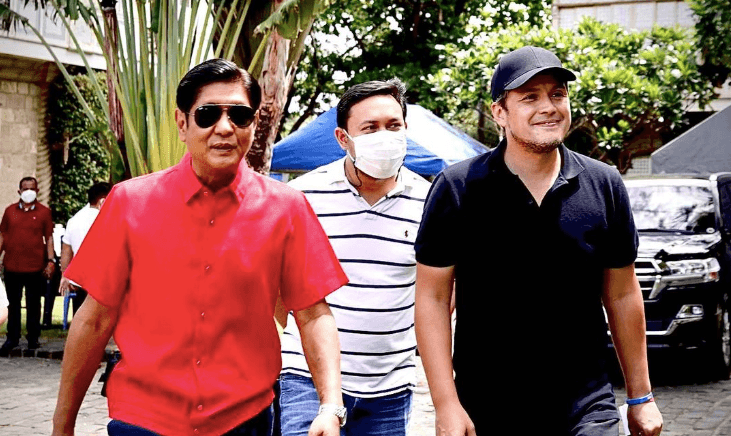MANILA, Philippines — President Ferdinand “Bongbong” Marcos Jr. personally visited Davao Oriental on Monday to assess the situation and direct government response following two successive earthquakes that struck the province over the weekend.
Accompanied by members of his Cabinet and local government officials, the President inspected the Davao Oriental Provincial Hospital in Manay town to evaluate the extent of damage and ensure that medical services continue despite the impact of the quakes.
According to Malacañang, President Marcos instructed immediate deployment of assistance to affected communities, emphasizing that disaster response must transcend political boundaries. “We are all Filipinos, and in times of calamity, no province or city should be left behind,” the President was quoted as saying during a briefing with provincial leaders.
Swift Action from the National Government

Officials from the Department of Social Welfare and Development (DSWD), the Department of Public Works and Highways (DPWH), and the Department of Health (DOH) were present to coordinate relief operations and infrastructure assessments.
DSWD Secretary Rex Gatchalian reported that thousands of food packs and emergency shelter materials have already been distributed, while DPWH Secretary Manuel Bonoan ordered the immediate inspection of bridges and roads connecting the affected areas.
Local executives, including Davao Oriental Governor Niño Sotero Uy Jr., expressed gratitude for the prompt response. “The national government acted quickly. Even before our coordination meetings ended, help was already on its way,” Uy said.
The President’s visit came amid heightened public attention and speculation online, as critics had challenged him to personally go to Mindanao after the earthquakes. Marcos’s appearance in the province, however, drew praise from local residents who described the visit as “reassuring” and “timely.”
Transcending Political Lines

Observers noted that Davao, long considered a political stronghold of the Duterte family, remains a sensitive area for the current administration. Despite this, President Marcos was warmly received by local officials and citizens.
Political analyst Ramon Casiple commented that Marcos’s visit underscored his effort to show unity beyond partisanship. “This is an important gesture. It demonstrates that the President sees all regions as part of one nation, regardless of past political affiliations,” he said.
In recent months, the President has made similar visits to other regions affected by calamities, including Cebu and Masbate. In each case, local executives, regardless of political color, have publicly acknowledged the swift deployment of national resources.
Rehabilitation and Preparedness
During his Davao Oriental visit, President Marcos reiterated his administration’s commitment to strengthen disaster resilience programs, particularly in vulnerable areas of Mindanao.
He directed the Office of Civil Defense (OCD) and the National Disaster Risk Reduction and Management Council (NDRRMC) to conduct a comprehensive assessment of public infrastructure and community readiness in earthquake-prone provinces.
“We must not only respond quickly after a disaster but also prepare ahead of time,” the President said. “Our goal is to make every community ready and capable to withstand these events.”
Meanwhile, local authorities confirmed that power and communication lines in most parts of the province have already been restored. Temporary shelters were set up in school gyms and barangay halls for families whose homes were damaged.
Public Response and Broader Implications

Citizens across social media platforms shared photos and videos of the President’s arrival, many praising his on-the-ground approach. “Hindi lang puro meeting o live address. He’s really out there,” one resident wrote on Facebook.
For others, the visit symbolized a much-needed sense of unity amid political divisions. “What we saw in Davao was not just a leader visiting a disaster site, but a President fulfilling his role to serve all Filipinos,” said community leader Marilou Tan.
Government communications officials clarified that the President’s trip was not a publicity event but part of a scheduled inspection following the earthquakes. The Palace also assured that relief assistance will continue in the coming weeks, particularly in rural areas that remain difficult to access.
Looking Ahead
Analysts suggest that Marcos’s consistent presence in disaster-stricken areas could improve his image as a hands-on leader. However, they also warned that sustained support and long-term rehabilitation plans are essential to ensure lasting recovery.
“This is where consistency matters,” said Professor Louie Gonzales of the University of the Philippines. “Public confidence grows not only from immediate aid but from how the government helps communities rebuild and become more resilient.”
As of Tuesday, no major aftershocks have been reported, though authorities remain on alert. The Philippine Institute of Volcanology and Seismology (Phivolcs) continues to monitor the area closely.
For now, Davao Oriental residents are beginning to return to normal life, grateful for the swift action of both local and national governments. Amid political differences and challenges, many see the President’s visit as a reminder that in the face of calamity, unity and compassion remain the nation’s greatest strength.





